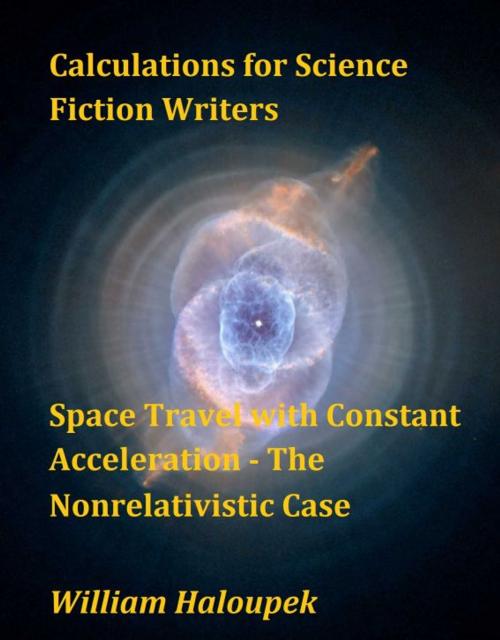Calculations for Science Fiction Writers/Space Travel with Constant Acceleration: The Nonrelativistic Case
Nonfiction, Science & Nature, Science, Physics, Astrophysics & Space Science, Science Fiction & Fantasy, Science Fiction| Author: | William Haloupek | ISBN: | 9781301789078 |
| Publisher: | William Haloupek | Publication: | January 30, 2013 |
| Imprint: | Smashwords Edition | Language: | English |
| Author: | William Haloupek |
| ISBN: | 9781301789078 |
| Publisher: | William Haloupek |
| Publication: | January 30, 2013 |
| Imprint: | Smashwords Edition |
| Language: | English |
This is one of a planned series called Calculations for Science Fiction Writers. Later chapters will include a relativistic version of this one, and others on circular orbits, elliptical orbits rotational dynamics, and more. For those writers who want to get the details right!
This article explains basic calculations related to constant acceleration. It should be of interest to science fiction writers who want to make their stories realistic, and to anyone interested in space travel, real or fictional. The number of scary looking equations is kept to a necessary minimum. I just give you the equations you need, with no calculus or vectors required.
When I refer to constant acceleration, I mean constant in both magnitude and direction, as felt by passengers. This greatly simplifies the trajectories involved, while still remaining applicable to some interesting cases.
It may come as a surprise that a spaceship capable of accelerating at 1g continuously would be able to tour the inner solar system on a time scale of days, and the outer solar system on a time scale of weeks.
This is one of a planned series called Calculations for Science Fiction Writers. Later chapters will include a relativistic version of this one, and others on circular orbits, elliptical orbits rotational dynamics, and more. For those writers who want to get the details right!
This article explains basic calculations related to constant acceleration. It should be of interest to science fiction writers who want to make their stories realistic, and to anyone interested in space travel, real or fictional. The number of scary looking equations is kept to a necessary minimum. I just give you the equations you need, with no calculus or vectors required.
When I refer to constant acceleration, I mean constant in both magnitude and direction, as felt by passengers. This greatly simplifies the trajectories involved, while still remaining applicable to some interesting cases.
It may come as a surprise that a spaceship capable of accelerating at 1g continuously would be able to tour the inner solar system on a time scale of days, and the outer solar system on a time scale of weeks.















